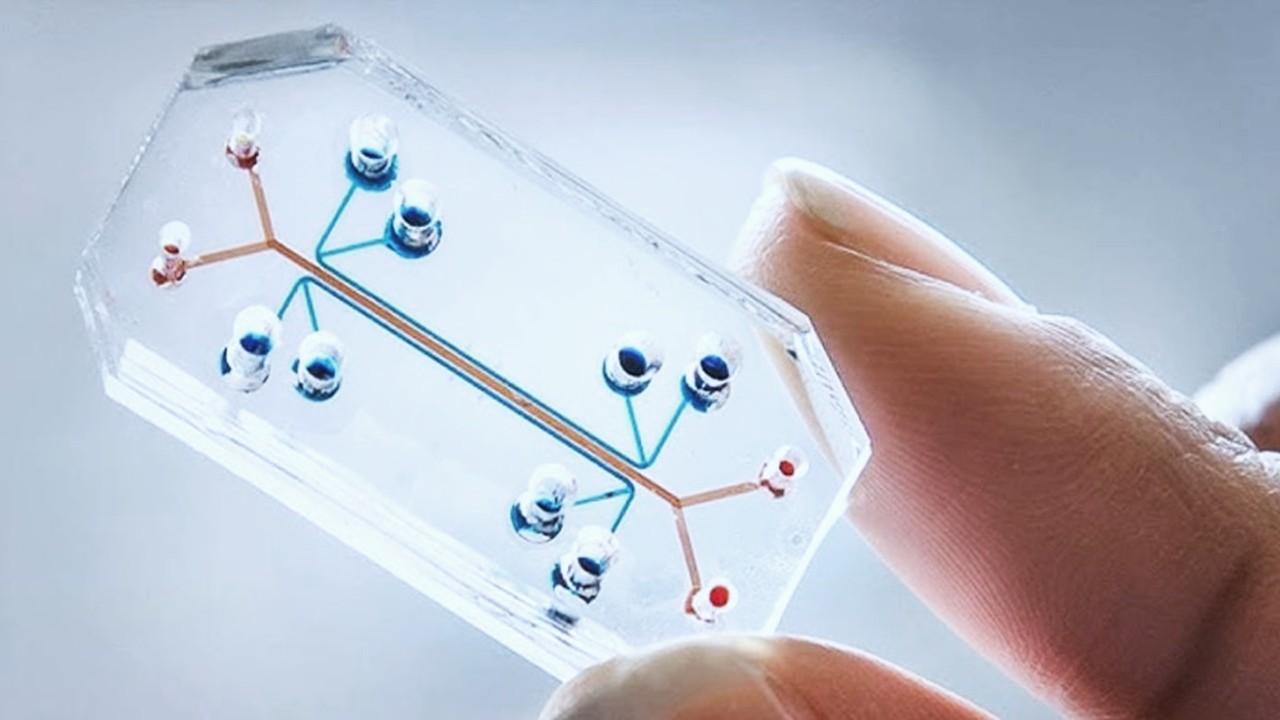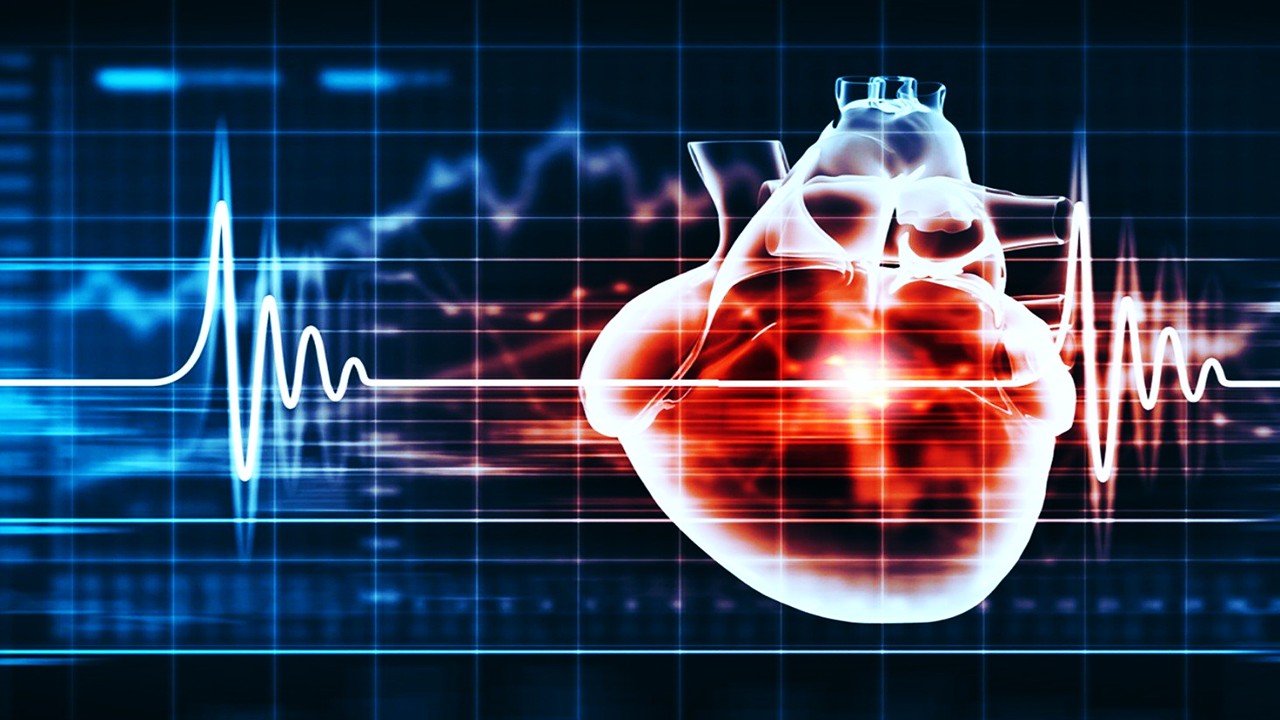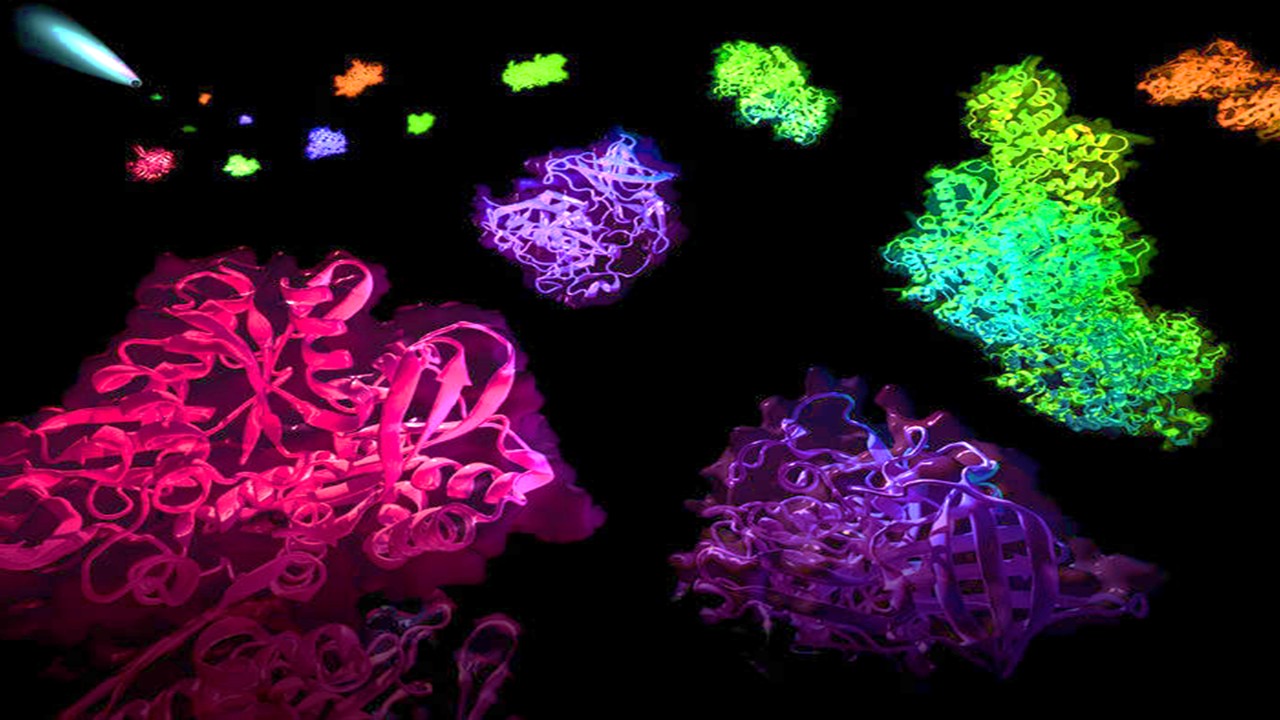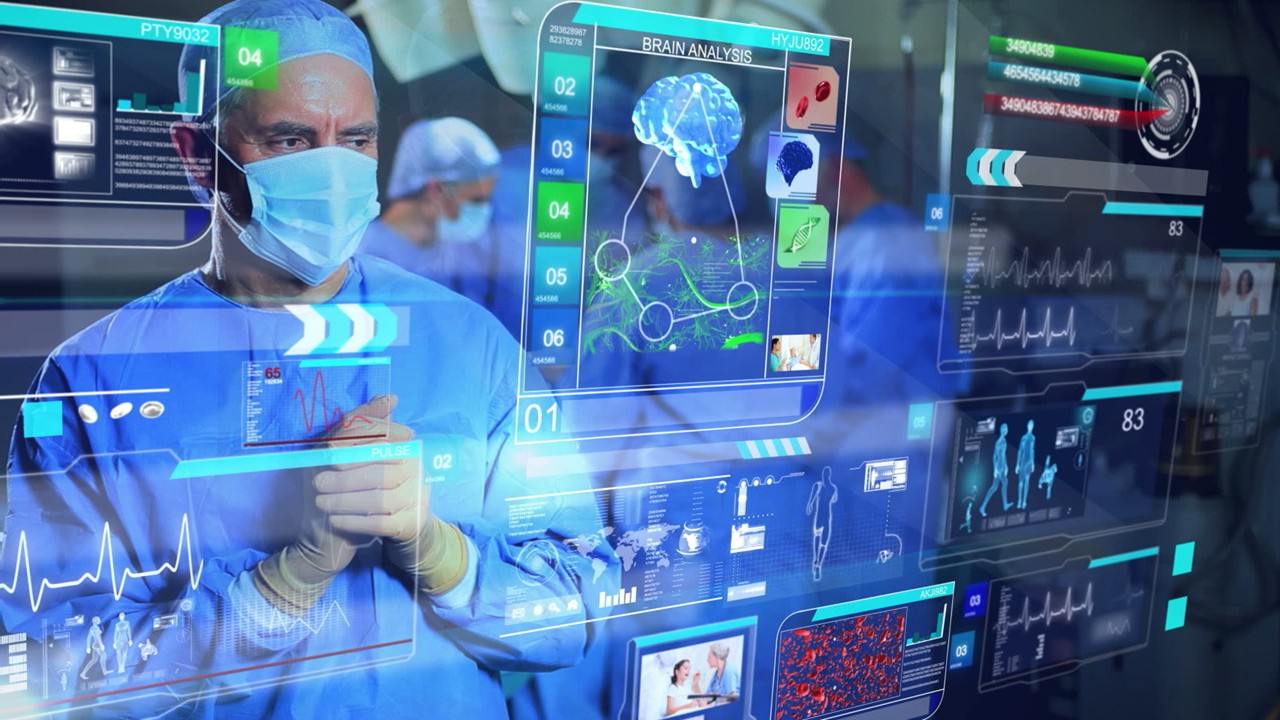The Growing Burden of Neurodegenerative Disorders
Neurodegenerative disorders (NDs) have emerged as one of the most daunting challenges in modern medicine. As our population ages, the prevalence of conditions like Alzheimer’s disease (AD), Parkinson’s disease (PD), and Amyotrophic Lateral Sclerosis (ALS) continues to rise, affecting millions globally. These disorders are characterized by the progressive loss of neurons, leading to significant cognitive and motor impairments that severely impact quality of life.
Central to the pathophysiology of NDs is neurodegeneration, which involves the dysfunction and death of neurons. This process disrupts communication within the brain, leading to the deterioration of synapses and neural networks, and the accumulation of altered proteins. Despite substantial research efforts, the precise mechanisms underlying these diseases remain elusive, and current treatments primarily focus on symptom management rather than halting or reversing disease progression.
The Blood-Brain Barrier: A Stubborn Obstacle
A major hurdle in treating NDs is the blood–brain barrier (BBB), a highly selective permeability barrier that protects the brain from harmful substances in the blood while allowing essential nutrients to pass through. This barrier, while vital for maintaining brain homeostasis, poses a significant challenge for drug delivery. Many therapeutic agents, including potential neuroprotective drugs, are unable to cross the BBB in effective concentrations without causing damage.
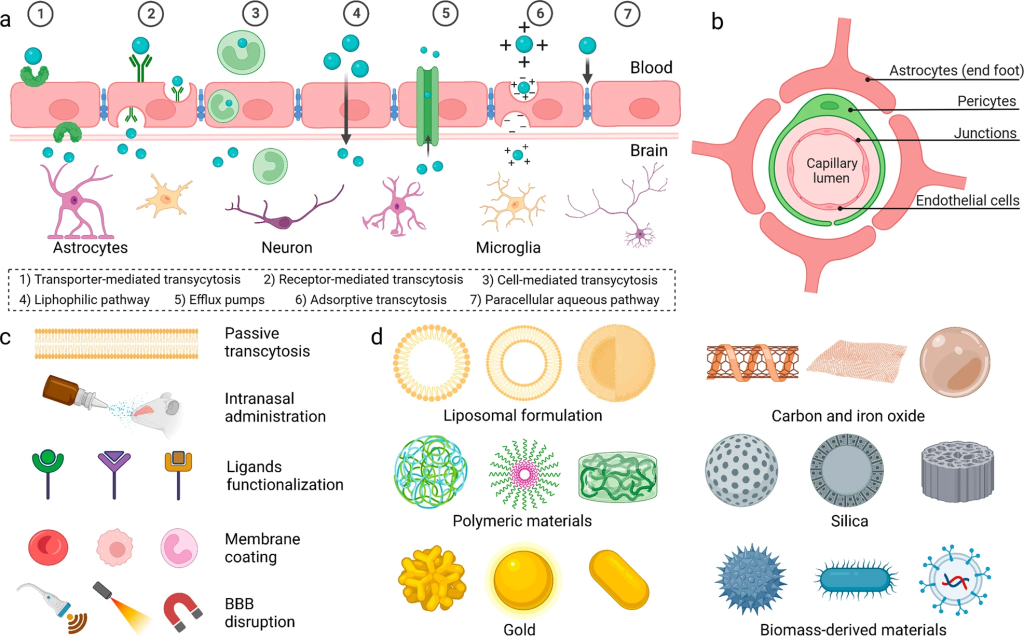
Traditional approaches, such as invasive surgeries or high-risk interventions, have had limited success and often come with significant risks and complications. The need for a non-invasive, effective method to deliver therapeutics across the BBB has never been more pressing.
Nanotherapeutics: A New Hope
Enter nanotherapeutics, an innovative approach that promises to revolutionize the treatment of NDs. Nanoparticles can be engineered to cross the BBB without compromising its integrity, offering a potential solution to the longstanding problem of drug delivery to the brain. These tiny carriers can be designed to deliver drugs directly to specific areas of the brain, minimizing side effects and maximizing therapeutic efficacy.
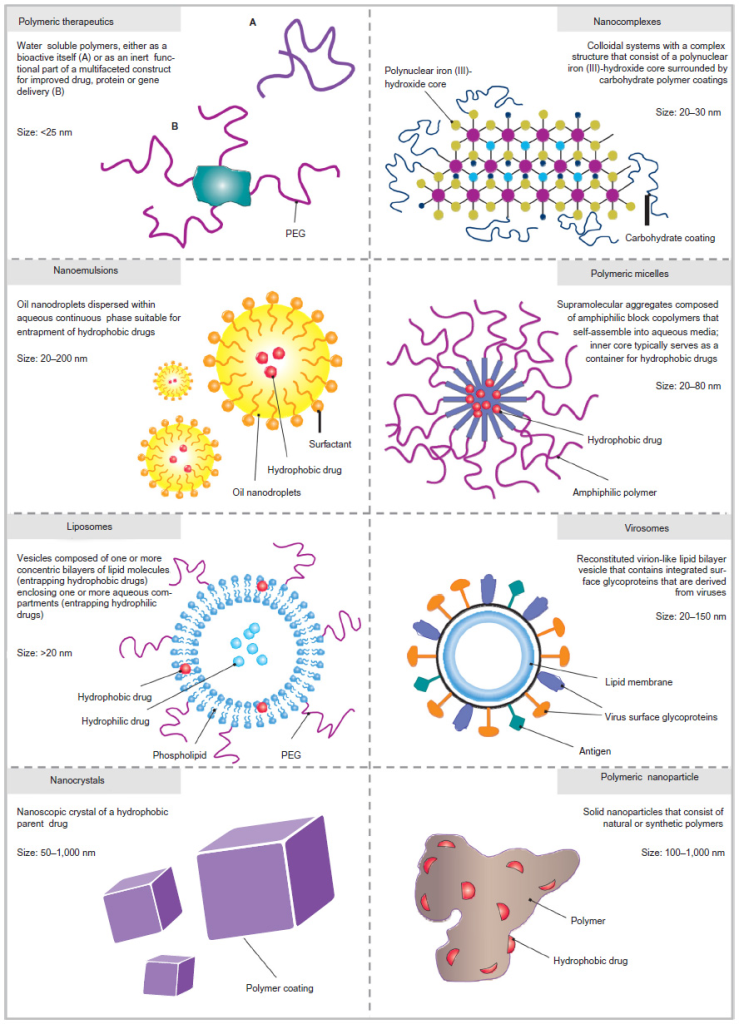
Nanotherapeutics offer several advantages over conventional therapies. They can be tailored to enhance drug solubility, stability, and bioavailability. Additionally, nanoparticles can be modified to avoid detection and clearance by the body’s immune system, allowing for sustained drug release and targeted action. Despite these promising features, the field of nanotherapeutics is still in its infancy, and further refinement is necessary to ensure optimal outcomes.
Understanding the Pathophysiology of Major Neurodegenerative Disorders
Alzheimer’s Disease (AD)
AD is the most common cause of dementia among older adults. The disease is marked by the accumulation of amyloid-beta (Aβ) plaques and neurofibrillary tangles (NFTs) composed of hyperphosphorylated tau protein in the brain. These pathological features disrupt neural communication, particularly in the hippocampus, leading to impairments in memory and cognitive function. As AD progresses, extensive neuronal loss and synaptic dysfunction occur, affecting various brain functions and ultimately leading to severe cognitive decline.
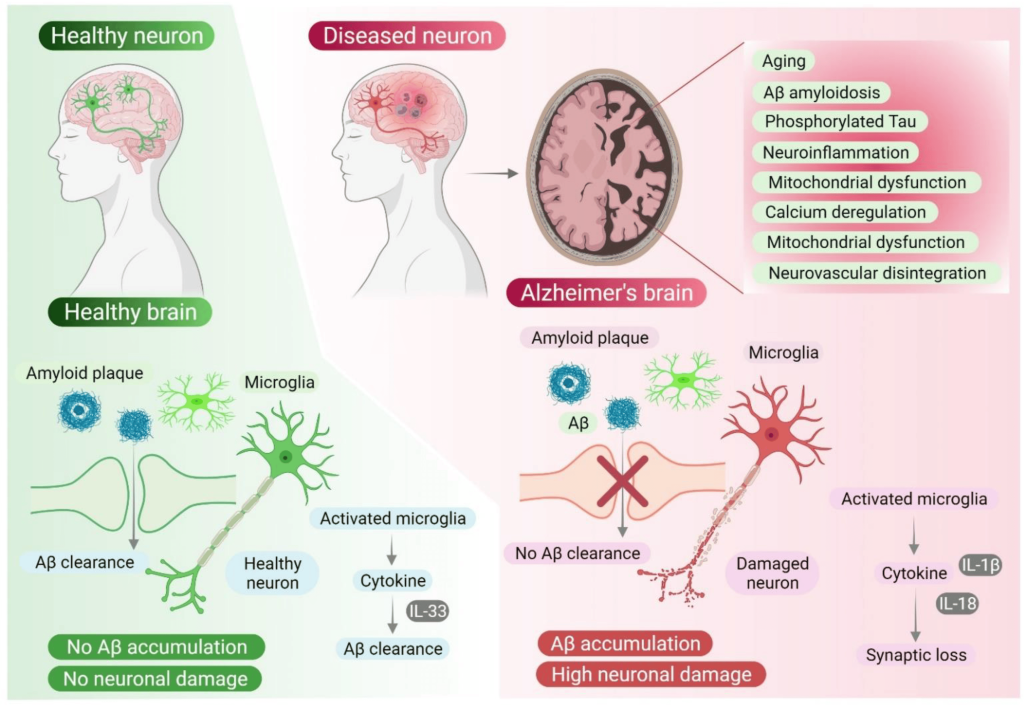
Parkinson’s Disease (PD)
PD is a progressive neurological disorder characterized by tremors, muscle stiffness, and impaired balance and coordination. The disease primarily affects the dopaminergic neurons in the substantia nigra, a region of the brain that plays a crucial role in movement control. The loss of these neurons leads to a decrease in dopamine levels, resulting in the hallmark motor symptoms of PD. Non-motor symptoms, such as cognitive impairment and mood disorders, are also common. Key pathological features of PD include the presence of Lewy bodies, which are abnormal aggregates of the protein α-synuclein.
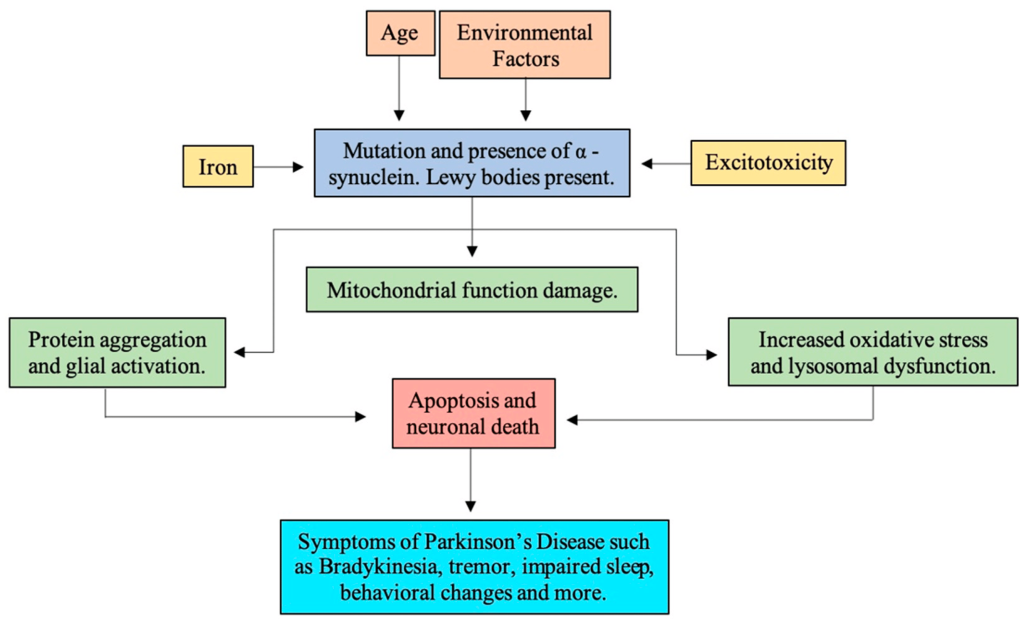
Amyotrophic Lateral Sclerosis (ALS)
ALS, also known as Lou Gehrig’s disease, is a devastating condition that leads to the progressive degeneration of motor neurons. This results in muscle weakness, paralysis, and ultimately, respiratory failure. ALS is linked to mutations in several genes, including C9orf72, TARDBP, SOD1, and FUS, which are involved in various cellular processes essential for motor neuron health. The accumulation of protein aggregates is a hallmark of ALS, though the exact sequence of events leading to neuron death remains unclear.
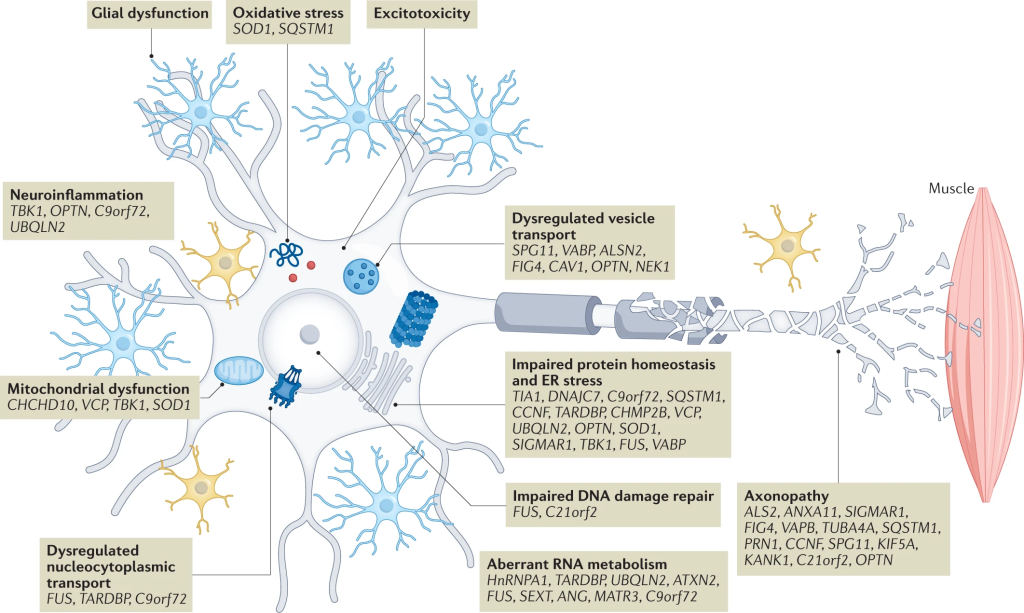
The Role of Nanotherapeutics in Fighting Neurodegeneration
Nanotechnology offers a transformative approach to overcoming the challenges posed by the BBB and delivering effective treatments for NDs. Various types of nanoparticles, including liposomes, dendrimers, and polymeric nanoparticles, are being explored for their potential to carry therapeutic agents across the BBB.
Current Breakthroughs
Recent studies have demonstrated the potential of nanoparticles to deliver drugs that can reduce the pathological features of NDs. For instance, nanoparticles loaded with Aβ antibodies have shown promise in reducing amyloid plaque burden in animal models of AD. Similarly, nanoparticles designed to deliver dopamine or protect dopaminergic neurons are being investigated for PD.

Future Directions
The future of nanotherapeutics lies in the development of multifunctional nanoparticles capable of simultaneously targeting multiple pathways involved in neurodegeneration. Advances in nanotechnology may also enable personalized treatment approaches, where nanoparticles are tailored to the specific genetic and environmental factors influencing an individual’s disease.



Conclusion
The fight against neurodegenerative disorders is one of the most critical challenges in modern medicine. While significant progress has been made in understanding the pathophysiology of these diseases, effective treatments remain elusive due to the formidable barrier posed by the BBB. Nanotherapeutics offer a beacon of hope, providing innovative strategies to deliver drugs directly to the brain and potentially halt or reverse neurodegeneration. As research in this field advances, the prospect of developing effective therapies for NDs becomes increasingly tangible, heralding a new era in the management of these debilitating conditions.
Engr. Dex Marco Tiu Guibelondo, B.Sc. Pharm, R.Ph., B.Sc. CpE
Subscribe
to get our
LATEST NEWS
Related Posts
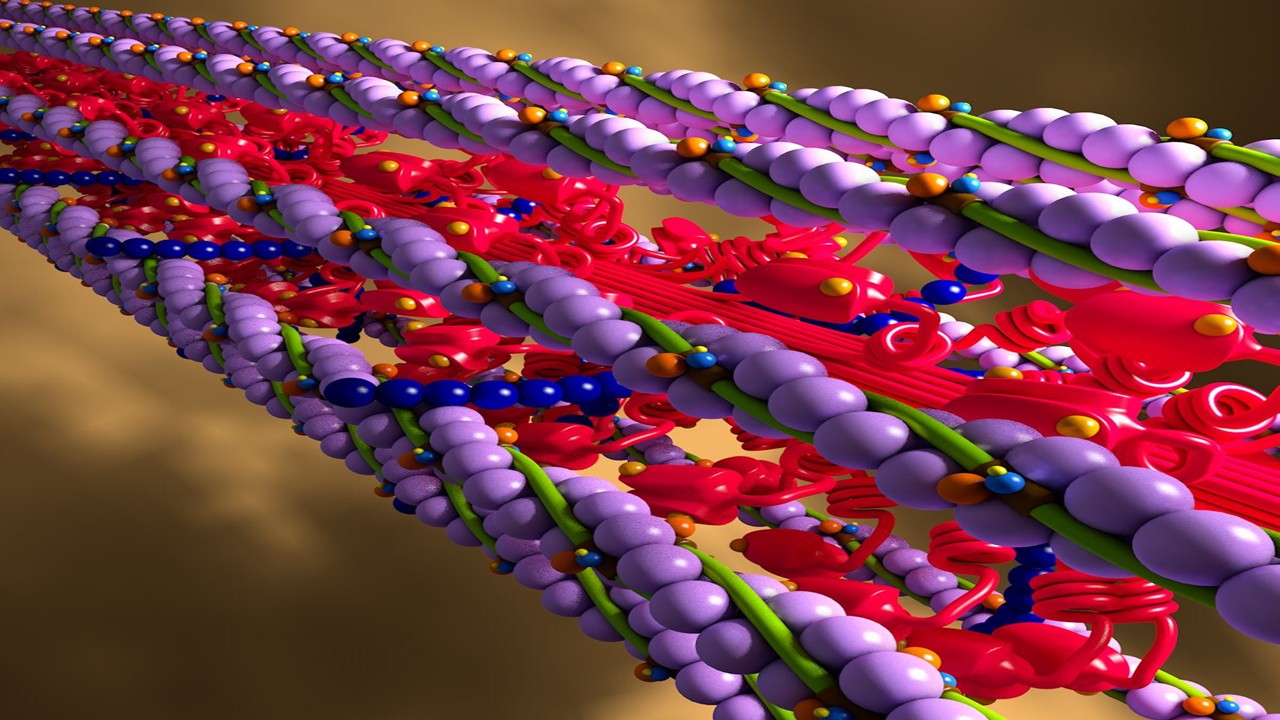
Molecular Biology & Biotechnology
Myosin’s Molecular Toggle: How Dimerization of the Globular Tail Domain Controls the Motor Function of Myo5a
Myo5a exists in either an inhibited, triangulated rest or an extended, motile activation, each conformation dictated by the interplay between the GTD and its surroundings.
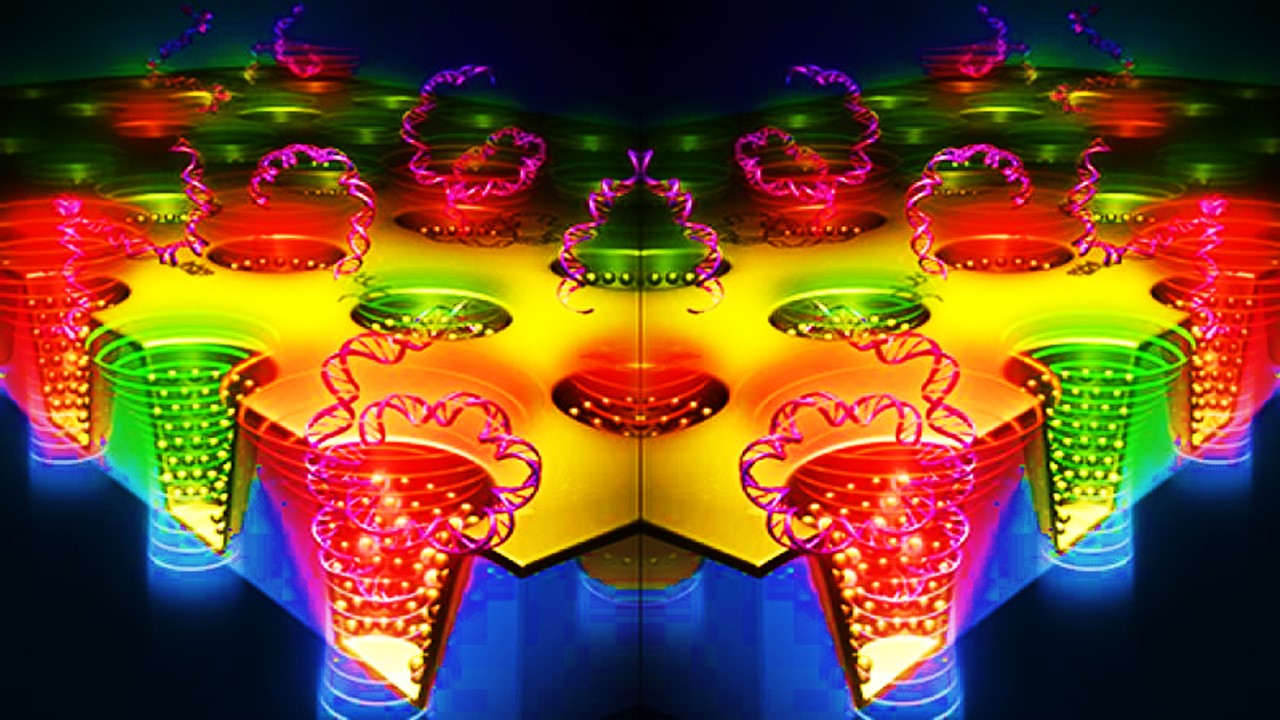
Drug Discovery Biology
Unlocking GPCR Mysteries: How Surface Plasmon Resonance Fragment Screening Revolutionizes Drug Discovery for Membrane Proteins
Surface plasmon resonance has emerged as a cornerstone of fragment-based drug discovery, particularly for GPCRs.
Read More Articles
Designing Better Sugar Stoppers: Engineering Selective α-Glucosidase Inhibitors via Fragment-Based Dynamic Chemistry
One of the most pressing challenges in anti-diabetic therapy is reducing the unpleasant and often debilitating gastrointestinal side effects that accompany α-amylase inhibition.






